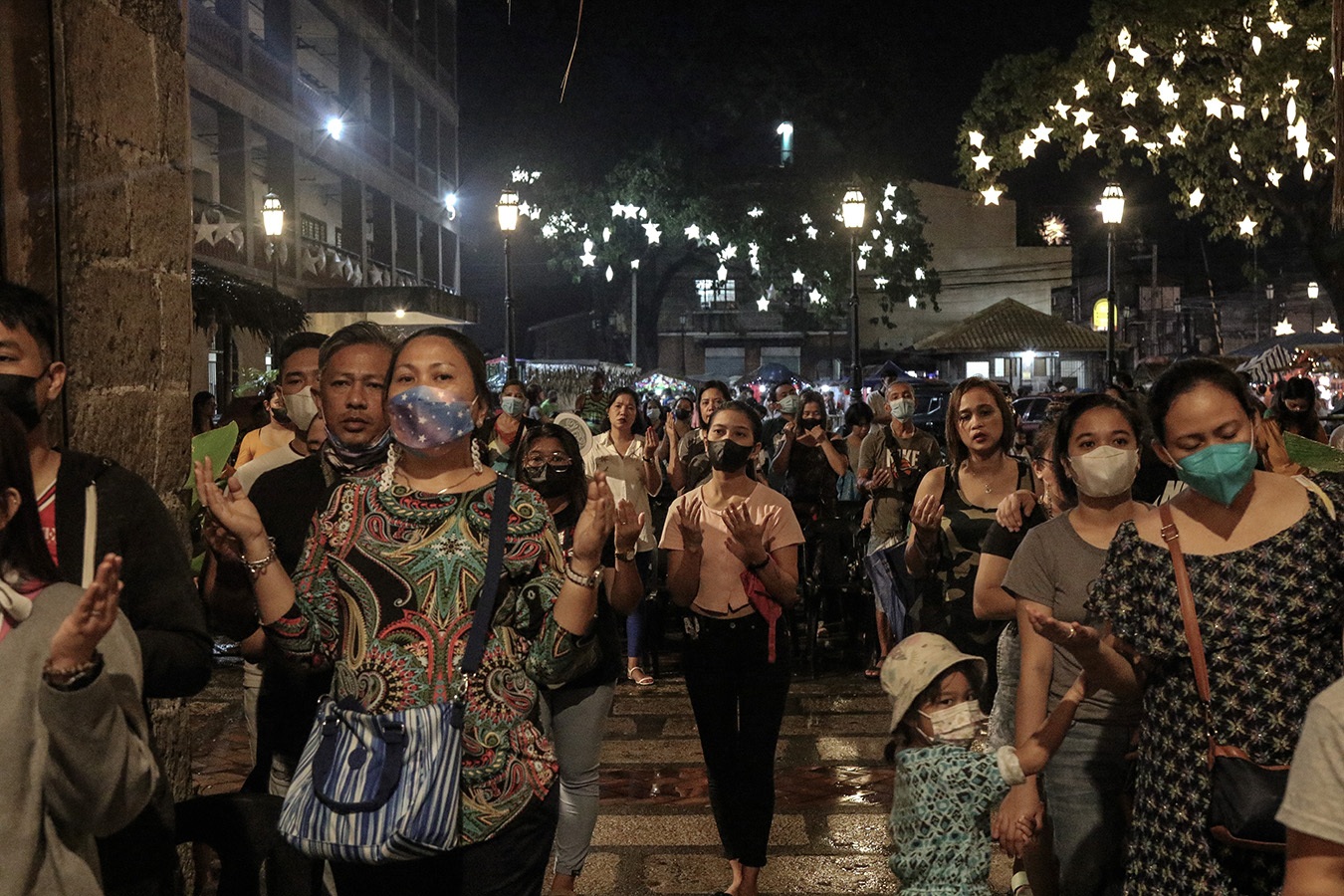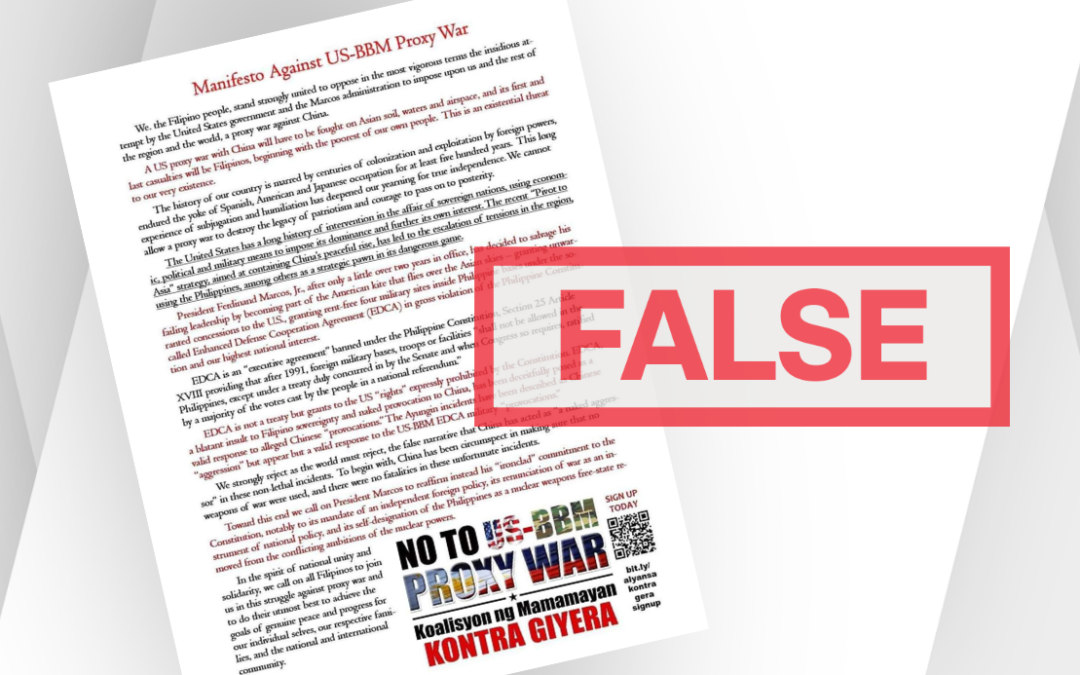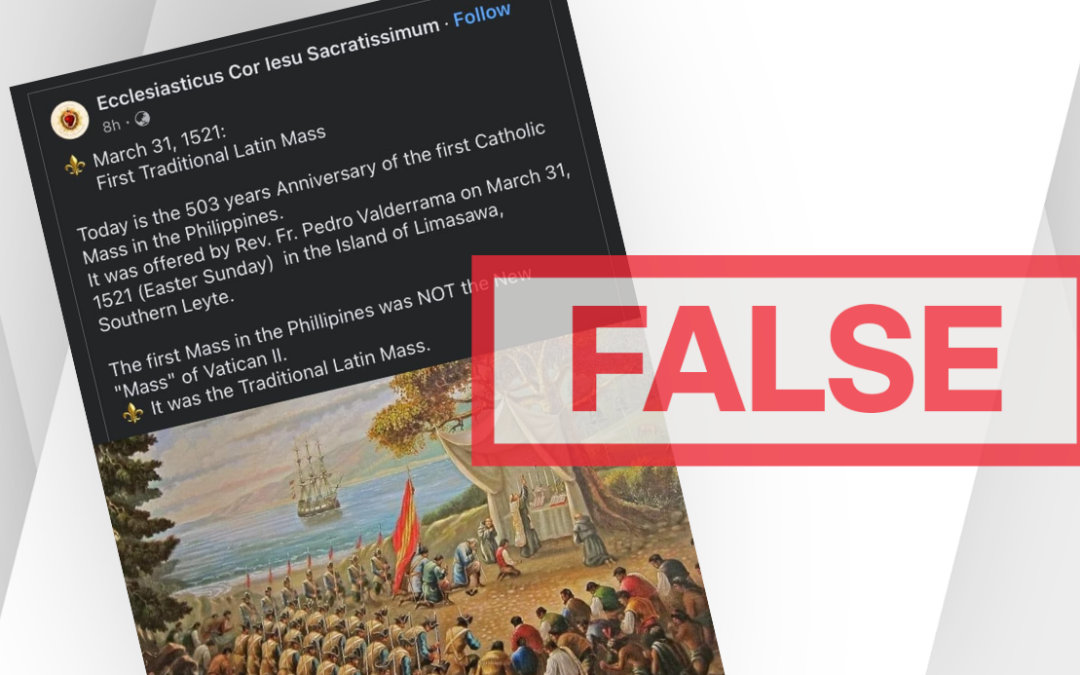

Catholics attend the traditional “Simbang Gabi” at the Diocesan Shrine and Parish of St. Joseph in Las Piñas City on December 16, 2022. MICHAEL DALOGDOG
CLAIM: Simbang Gabi, Misa de Aguinaldo, and Misa de Gallo all refer to Masses held at dawn nine days before Christmas.
RATING: MISSING CONTEXT
Simbang Gabi, Misa de Aguinaldo, and Misa de Gallo are now commonly interchanged to refer to the Masses held at dawn nine days before Christmas. Historical context, however, shows that this was not originally the case.
The novena Masses held at dawn from Dec. 16 to 24 are properly called Misas de Aguinaldo, which originated in Spain, according to historical research conducted by the late Dominican historian Fr. Fidel Villarroel, O.P. “Aguinaldo” means a gift given during the Christmas season.
Misa de Aguinaldo should not be confused with Misa de Gallo (Rooster’s Mass), which in Spain referred to Mass on Christmas Eve or Dec. 24, he said.
“[T]here has always been in Spain the Misa de Gallo, which is celebrated at midnight on December 24 even today, and is wrongly used by Filipinos when referring to the novena of dawn Masses celebrated in this country,” Villarroel said in his 1999 paper.
“In Spain, when the Masses de Aguinaldo existed, they were celebrated in the early hours of the morning,” he added.
The Spanish Dominican cited 18th- and 19th-century texts using the term de Aguinaldo, or variations or misspellings thereof, to refer to the dawn Masses. The term de Aguinaldo was also used by the 1953 plenary council of bishops as well as the “Ordo” or liturgical calendar, he pointed out.
The current Ordo (page 11) continues to adhere to this practice and refers to the novena Masses as “Aguinaldo Masses.”
Villarroel argued that novena Masses held during evenings at churches, chapels, and malls for the benefit of office workers, often called Simbang Gabi, should still be considered Misas de Aguinaldo.
PressOne.PH also consulted older dictionaries for this fact-check.
The 1973 Diksyunaryo-Tesauro Pilipino-Ingles by the late Jose Villa Panganiban, a former director of the national language institute (now Komisyon sa Wikang Filipino), defines “Misa-de-galyo” as “midnight Mass.”
The terms “Misa-de-galyo” and “Misa Aginaldo” however were interchangeable in the 1986 Tagalog-English dictionary of Fr. Leo English, the Redemptorist priest, likely reflecting popular, although historically incorrect, usage. PressOnePH
Editor’s note: The period of Misa de Aguinaldo was corrected to Dec. 16 to 24 (from Dec. 16 to 23). The seventh paragraph was inserted to offer additional evidence.
PressOne.PH is part of #FactsFirstPH which brings together various sectors that are committed to promoting truth in the public space, and exacting accountability on those who harm it with lies. For those interested to join the initiative, email info@factsfirst.ph
PressOne.PH believes that fact-checking is essential to combating misinformation and disinformation, and in informing and educating citizens and voters. Read more of PressOne.PH’s Fact-Checking Policy by clicking here.
The public is welcome to send feedback or requests for fact-checks at factcheck@pressone.ph.

PressOne.PH is a verified signatory of the Code of Principles of the International Fact -Checking Network at Poynter. The code of principles of the IFCN is a series of commitments organizations abide by to promote excellence in fact-checking.
If you believe PressOne.PH is violating the Code of Principles of the International Fact-Checking Network, you may submit a complaint directly to the IFCN website: https://ifcncodeofprinciples.poynter.org/complaints-policy


FACT-CHECK: EDCA is not unconstitutional
: A manifesto shared by a pro-China personality falsely claimed that the Enhanced Defense Cooperation Agreement between the Philippines and the United States is banned under the constitution.

FACT-CHECK: Taylor Swift did not make any comment about US ability to stop war in Taiwan
An X user made the false claim that Taylor Swift had commented about the United States’ naval capability to deter an invasion of Taiwan.

FACT-CHECK: Facebook post uses wrong painting to depict first Mass in PH
A Facebook post used the wrong painting to depict what it described as the first Mass in the Philippines.